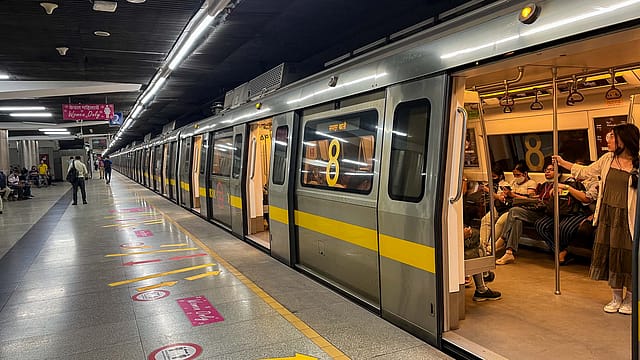Cabinet greenlights ₹8,399 cr Delhi Metro project for two new corridors
ADVERTISEMENT

The Union Cabinet on Wednesday approved the development of two additional Delhi Metro routes, connecting Lajpat Nagar to G Block in Saket and Inderlok to Indraprastha, with a total length of 20.762 kilometres. This expansion is expected to benefit approximately 2.5 lakh commuters. The announcement comes ahead of the Lok Sabha elections this year. The estimated cost of the metro project is ₹8,399 crore.
The Inderlok to Indraprastha corridor, spanning 12.377 kilometres, will extend the Green Line and offer interchange options with the Red, Yellow, Airport Line, Magenta, Violet, and Blue Lines. Meanwhile, the Lajpat Nagar to Saket G Block corridor, covering 8.385 kilometres, will connect the Silver, Magenta, Pink, and Violet Lines. The latter will be entirely elevated with eight stations, while the former will include 11.349 kilometres of underground lines and 1.028 kilometres of elevated lines, totaling 10 stations, the cabinet says in a release.
The Inderlok to Indraprastha Line will enhance connectivity to the Bahadurgarh region of Haryana, allowing commuters from these areas direct access to Indraprastha and other central and eastern Delhi regions via the Green Line.
Additionally, eight new interchange stations will be constructed at Inderlok, Nabi Karim, New Delhi, Delhi Gate, Indraprastha, Lajpat Nagar, Chirag Dilli, and Saket G Block. These stations are anticipated to significantly improve connectivity among all operational lines of the Delhi Metro network, the government adds.
December 2025
The annual Fortune 500 India list, the definitive compendium of corporate performance, is out. This year, the cumulative revenue of the Fortune 500 India companies has breached $2 trillion for the first time. Plus, find out which are the Best B-schools in India.
These new corridors are part of the Delhi Metro's fourth phase expansion, which aims to construct a network spanning 65 kilometres. The completion of these corridors is expected by March 2026, with construction occurring in stages. Currently, the Delhi Metro operates a network of 391 kilometres comprising 286 stations.
Recently, Prime Minister Narendra Modi inaugurated Kolkata's maiden underwater metro route, linking the twin cities of Howrah and Salt Lake in the capital of West Bengal. This innovative route features three submerged stations and spans a 520-metre stretch beneath the Hooghly River, providing a swift 45-second journey between the bustling locales. Among the six stations, half will be situated underground.
The metro achieved a historic milestone by conducting India's first-ever underwater tunnel train trial. The newly constructed tunnel descends 26 metres beneath the river's surface, with trains navigating at a depth of 16 metres below the riverbed. This initiative marks a significant advancement in India's transportation infrastructure, introducing a metro train that traverses beneath a flowing river.
According to the Ministry of Railways, approximately 10.8 kilometres of the route will be underground, supplemented by 5.75 kilometres elevated on a viaduct. This endeavour is poised to alleviate traffic congestion in Kolkata, providing relief to the bustling metropolis.
